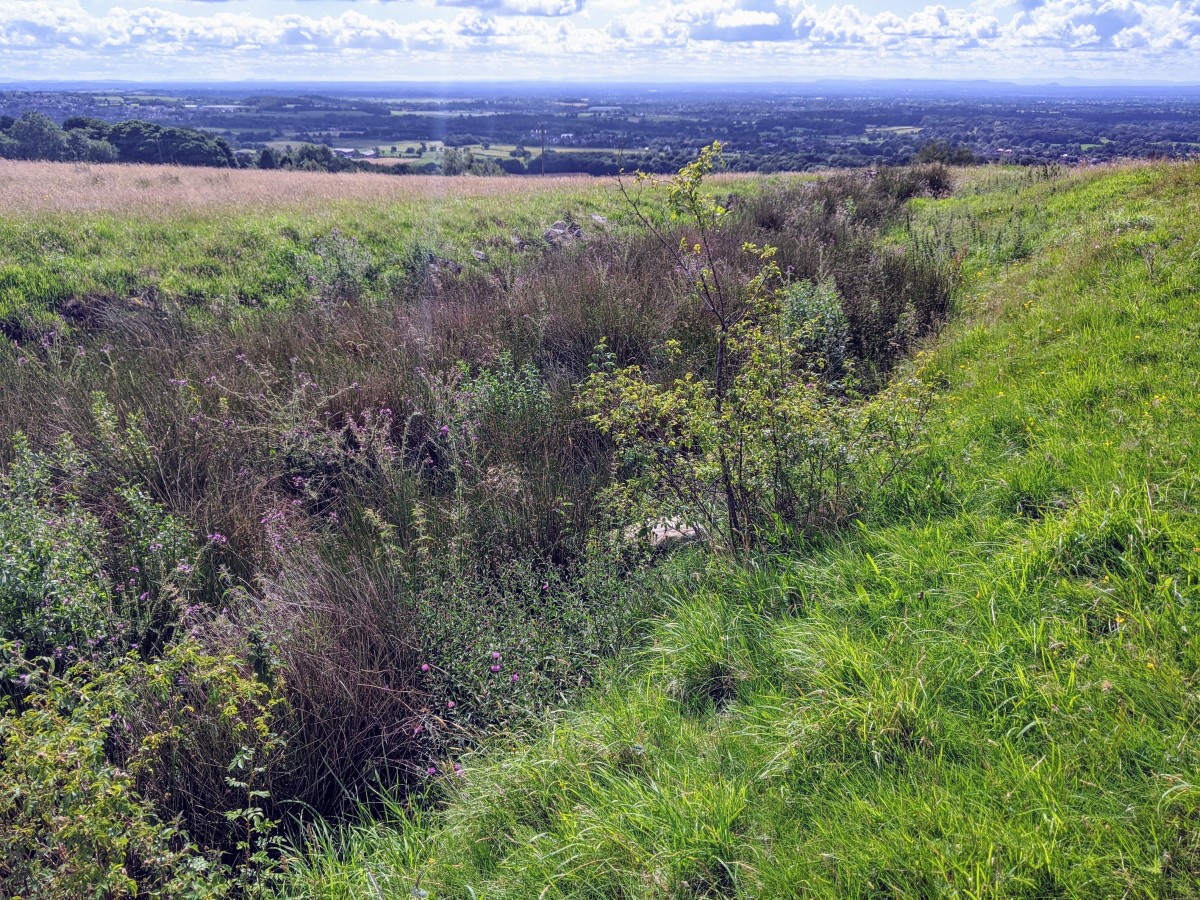Did you know that there was a hidden tunnel below Mow Cop?
Mow Cop is very well known throughout Staffordshire and Cheshire for its folly or little castle. Sitting proud and high above its surroundings, it can be seen for many miles atop its gritstone throne.
However, we aren't looking up, we are looking down, into a tunnel that has been underneath the village of Mow Cop for over 180 years and hidden for around 120.
Modern-Day Map of Mow Cop

History of Mining in Mow Cop
In the early 1800s, Mow Cop was a hive of mining activity. Transport of the coal was needed from the Towerhill and Stonetrough Collieries to the Macclesfield Canal at Kent Green. Whereas the evidence of stone quarrying around Mow Cop is quite obvious, the history of coal mining is well hidden.
In 1838 an agreement was reached between The Macclesfield Canal Company and Robert Williamson, a local colliery and landowner, for a railway to be built to haul coal using a steam engine. The track ran from Stonetrough up to Towerhill.
The tubs were pulled up and lowered down the embankment using a brake level, which consisted of two parallel tracks linked together with a continuous rope which would have been wrapped around pulleys at the top and the bottom of the hill. The full tub coming down the embankment would pull the empty tub back up. This was a common type of tramway at this time.
The tramway went via a straight and steep descent down to the wharf on the Macclesfield Canal at Kent Green.


The tunnel itself was created by blasting through the gritstone using black powder. In fact, there are many intact blast marks still visible in the gritstone in the tunnel, just over 1 inch thick. Thus creating a tunnel that was approximately 7' 9" wide and 400 yards long.
The entrance to the tunnel lies in an unsuspecting field just down from Mow Cop Methodist Chapel and is very well hidden and covered with rocks and grass. In fact, even when you are standing almost on top of it you can barely see it unless you know what you are looking for.
One end of the tunnel is buried and as you enter the tunnel you will see that it is underwater. As the tunnel slopes gently, the water gets deeper. The majority of the tunnel is not accessible without at least a decent set of waders.
You can see the remnants of the tramway and where the brake ran from the tunnel and down the field heading down to the canal. This is still visible via satellite on Google Maps and when you walk along the bottom of the field in which the tunnel is situated.

1873 OS Map of the Tunnel and Tracks at Mow Cop

Luckily the tunnel is relatively unchanged since the 1800s. The black on the walls is still visible from the coal tubs and the wooden sleepers are still there. Interestingly, the sleepers were laid out differently from the way that we usually see railway sleepers. They were laid out on either side of the tracks instead of down the middle. The reasons for this were twofold. This layout helped to stop the track from moving under the enormous weight of the coal tubs. The other reason was to simply allow the horses to walk between the tracks unhindered.
Locally bred Clydesdale horses were used for the job and their size is probably part of the reason for the rare turning circle, which is approximately 20 feet wide, that had been built into the tunnel two-thirds of the way down. The coal carts would have been pulled by the horses, then the horses were taken away turned in the circle and then the coal would have been pushed by hand, downhill, with the help of gravity to the entrance to the tunnel.
Inside Mow Cop Tramway Tunnel

Hidden History
It is fascinating to think that this amazing piece of local mining history is just sitting underneath the unsuspecting people of Mow Cop. Largely unchanged since its last use. the only changes are the addition of lots of limonite and a collapse. The entrance to the tunnel has now been sealed in the interest of public safety.
The other end of the tunnel was across the road and up from The Ash Inn. It is just a simple patch of grass now but as you can see in the black and white photo above, it was the top entrance to the tunnel.
If You Know Where to Look
As a side note, there is another more visible relic leftover from Mow Cop's mining days. Near the junction of Tower Hill Road and Biddulph Road, you will find a Grade 2 listed building that used to be the Tower Hill winding house.
Although it is well known as the engine house, there is also speculation that this was actually the stables and saddlery for the horses, not the engine house.
The farm across from this building was reportedly the offices and the weighbridge for the colliery.

Our local history and heritage are all around us if you know where to look. If you take a walk along Congleton Edge Road you will notice that some of the tramways stone blocks are built into the dry stone walls.
Did you know about the tunnel underneath Mow Cop? Or do you have any interesting stories or photographs of the tunnel? I would love to hear from you, please leave a comment or contact me directly.
Check out Dean Explores video inside the tunnel
If you like what you have read, please feel free to support me by following and signing up for my newsletter and/or buying me a coffee!
Thank you.

If you are interested in the history of Mow Cop, then check out these books on Amazon.






